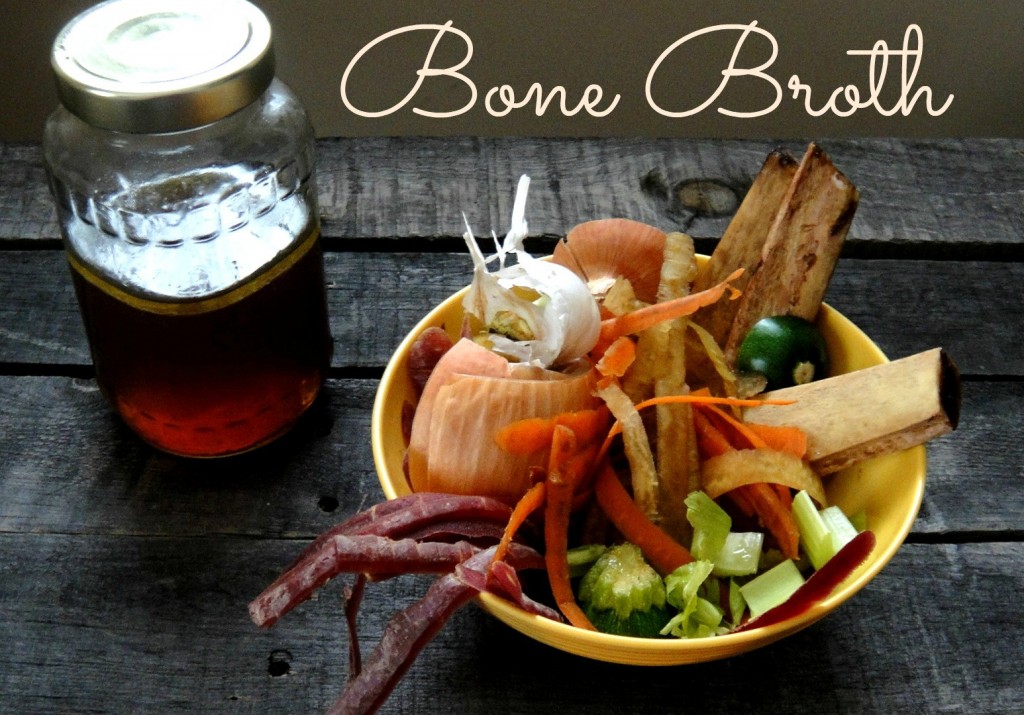The benefits of Bone Broth
Good food takes time. If you’re new to cooking, it can also seem like a lot of work. To prepare a meal today, we have to drive to the grocery store and purchase the ingredients; the vegetables that have been trucked in from across the country, the spices that have been dried and packaged for us, and the meat that has been pre-portioned by the butcher. But if this seems like a lot of work, what did people do before supermarkets existed?
Our ancestors spent a great deal of time and energy procuring the ingredients they needed for each meal. Because so much was invested in this gathering of materials, you can be sure that not a single thing went to waste, and that every ounce of nutrition was extracted. This is a stark difference from our consumption tendencies today. Americans throw away 40% of our food, or about 165 billion dollars, each year.
Even when we’re not deliberately throwing out food that is edible by US standards, we are unknowingly discarding some really important stuff. We tend to prefer cuts of (lean) meat that have conveniently been detached from the rest of the animal, and this results in a significant proportion of nutrients being neglected. Humans have evolved eating animals, and the molecules that make up their bodies provide the building blocks we need in our own. What nature never intended for us to do, however, is select a favorable body part (chicken breast anyone?) and discard the rest. What remains in this overlooked pile of bones and tid-bits is a wealth of nutrition, one that was utilized and coveted by our ancestors but is sadly forgotten today.
Muscle meat is only part of the nutritional reward we receive from eating an animal. And even though our society allots the highest value to muscle meat, there is a lot to be gained from what we’re leaving behind. Broth (or stock) made from boiling the bones of meat and fish has been used in nearly every traditional society around the world. Our predecessors intuitively recognized that this was a valuable source of nutrition, but modern science reveals exactly why that is. Broth is packed with the minerals our bodies need to be healthy- sodium, chloride, calcium, magnesium, phosphorus, potassium, and sulfur (the best source of usable calcium is bone broth and dairy products) We need these minerals today more than ever as our soils have become depleted, and unhealthy diets and stress drain the body of mineral stores.
A good broth will thicken and gel when it has cooled, and this is due to the gelatin content it contains. Just as this gelatin cushioned the joints of the animal it once belonged to, it will in turn aid in collagen production in the human who consumes it. Collagen is responsible for not only joint health, but also hair, skin, nails, bones, arteries, and the GI tract.
If you’ve experienced joint pain in your life, you might have experimented with Glucosamine supplements. Glucosamine is just one molecule contained in the Glycosaminoglycans family. When you take a glucosamine supplement, you are receiving one type of molecule, but when you consume bone broth you are receiving the entire spectrum (and it comes in a bowl of soup, instead of a pill!).
Ever been told to eat chicken soup to help kick a cold or flu? If so, you’re familiar with “Jewish penicillin”. This ancient remedy dates back thousands of years and is based on chicken soup’s ability to prevent and fight infections and boost immunity. When our bodies are fighting off an infection, we often lose our appetite. This is because digestion takes a great deal of energy, and when we’re sick our body needs to focus all of its attention on healing. Broth is perfect during these times because it requires very little digestion, and its nutrients are easily assimilated. Don’t expect to get the same results from cracking open a can of Campell’s though. Today, food manufactures add MSG (a neurotoxin) as well as a long list of non-nourishing additives and preservatives to mimic the taste of traditional broth and allow the product to last indefinitely on a grocery store shelf.
If you’re looking to stretch your food dollar while receiving the biggest nutritional return, think twice before you throw out those bones. Inside of them lie the components that we now seek out in the supplement isle of the health food store. Your ancestors weren’t dependent on a bottle of Centrum for their health, they simply learned to recognize the value within the resources they were given.
So how do you make this delicious health supplement for pennies?
Ingredients:
- Bones (from a healthy animal)
- Vegetables-carrots, celery, onions, etc. (I save the peelings and scraps from cooking in a bag in the freezer) avoid vegetables like broccoli, asparagus, cauliflower, cabbage
- Salt, peppercorns
- ¼ tsp vinegar (helps draw minerals out of bones)
Add all ingredients to crockpot or stockpot and cover with filtered water. Cook on low for at least 8 hours (the longer you cook, the more mineral rich your broth will be. I aim for at least 24 hours and up to 48). Once your broth is done, strain, place in jars and freeze or use within one week. You can use your broth for soups, in place of water in any recipe (like cooking beans), or straight out of a mug.
sources:
Sally Fallon, Nourishing Traditions
Catherine Shanahan, Deep Nutrition



I keep hearing about making stock and would like to give it a try. However, we don’t eat a ton of meat, so I never cook a whole chicken. If I bought a small rotisserie chicken or something like that, could I still use what’s left to make stock – and would it still be as healthy? Thanks!
Whenever we eat anything with bones, I put them in a bag in the freezer. You can save up until you have enough to make a broth. You can also purchase soup bones from a local farm or butcher. I’ve even seen them for sale in Whole Foods freezer section!
Great tip!! How long do they stay good in the freezer?
I would try to use them within a few months 🙂
This looks delicious. I’d love to freeze some to have one hand for when I’m feeling under the weather (including, mayhaps, a wee bit hungover :-p)
A soup that I really love when I’m feeling sick is Castillian Garlic Soup, and I bet it would be great with homemade chicken broth.
Having some frozen is a great idea! When you’re already feeling under the weather cooking is the last thing you want to do 🙂
Great piece. I’ve been doing GAPS for 4 months so bone broth is a staple for me 3 times a day. Sally Fallon’s Nourishing traditions is like a bible to me, it fantastic!
I’ve also been doing GAPS for 4 months and have seen some incredible changes. And that book is like a bible to me, too!
Allyson, do the bones need to be rid of the meat? Or is it okay to leave some of the scraps on the bone?
any meat you leave on will just add to the nutritional profile! technically, “stock” is made from the meat and “broth” is made from the bones.